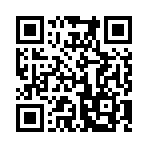safe.HTML
Syntax
Returns
Alias
Introduction
Hugo uses Go’s text/template and html/template packages.
The text/template package implements data-driven templates for generating textual output, while the html/template package implements data-driven templates for generating HTML output safe against code injection.
By default, Hugo uses the html/template package when rendering HTML files.
To generate HTML output that is safe against code injection, the html/template package escapes strings in certain contexts.
Usage
Use the safe.HTML function to encapsulate a known safe HTML document fragment. It should not be used for HTML from a third-party, or HTML with unclosed tags or comments.
Use of this type presents a security risk: the encapsulated content should come from a trusted source, as it will be included verbatim in the template output.
See the Go documentation for details.
Example
Without a safe declaration:
{{ $html := "<em>emphasized</em>" }}
{{ $html }}Hugo renders the above to:
<em>emphasized</em>To declare the string as safe:
{{ $html := "<em>emphasized</em>" }}
{{ $html | safeHTML }}Hugo renders the above to:
<em>emphasized</em>